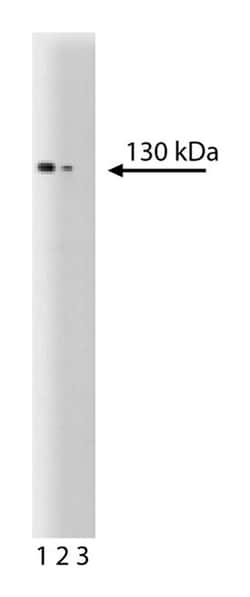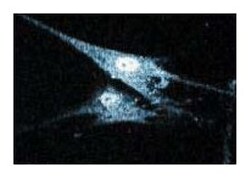Learn More
Apaf-1 Mouse anti-Human, Unlabeled, Clone: 24, BD
Mouse Monoclonal Antibody
Specifications
| Antigen | Apaf-1 |
|---|---|
| Clone | 24 |
| Concentration | 250μg/mL |
| Classification | Monoclonal |
| Conjugate | Unconjugated |
Description
The process of apoptosis requires the activation of aspartate-specific cystenine proteases in the caspase family. Group I caspases (1,4,5) cleave at (W/L)EHD tetrapeptide motifs, while group II caspases (2,3,7) cleave the DEXD tetrapeptide motif. Group III caspases (6,8,9) are activators of other caspases via cleavage of (I/V)EXD tetrapeptide sequences. Apoptotic protease-activating factor-1 (Apaf-1), cytochrome c, and dATP activate caspase-9, which in turn, initiates the post-mitochondrial-mediated caspase cascade that includes caspase-2, 3, 6, 7, 8 and 10. Apaf-1 is a soluble protein with a short N-terminal caspase recruitment domain (CARD), a central CED-4 homology domain, and 12 WD-40 repeats that may be involved in protein-protein interactions. During apoptosis, a large (700kDa) aposome complex containing Apaf-1, cytochrome c, caspase-3, 7, and 9, and a smaller (200-300kDa) microaposome complex containing caspase-3 and 7 exhibit higher cleavage activity than “free” caspase heterotetramers. Thus Apaf-1 is a component of the large aposome complex, which functions in caspase activation leading to caspase-dependent proteolytic events and apoptosis.
Immunofluorescence, Western Blotting
Specifications
| Apaf-1 | |
| 250μg/mL | |
| Unconjugated | |
| RUO | |
| Human | |
| IgG1 | |
| Affinity Purified |
| 24 | |
| Monoclonal | |
| Mouse | |
| Cell Biology | |
| Human Apaf-1 aa. 252-445 | |
| Primary |
For Research Use Only.
Your input is important to us. Please complete this form to provide feedback related to the content on this product.

